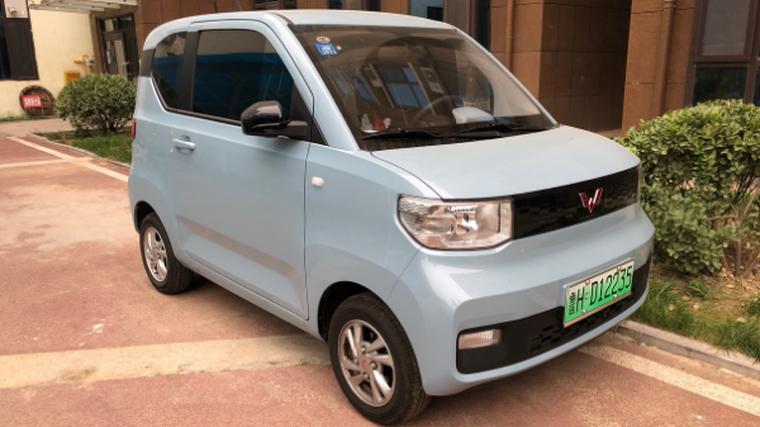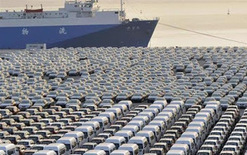Global EV sales boom

In 2012, about 130,000 new electric vehicles (EVs) were sold worldwide. Today, the same amount is moved in the space of a single week, according to the International Energy Agency (IEA).
A report published by the agency notes such sales have “been particularly impressive” over the past three years even with the market contracting due to the fall-out of Covid-19 and manufacturers grappling with supply-chain disruptions.
In 2019, 2.2 million EVs – the totals in the report include plug-in hybrids (PHEVs) and battery EVs (BEVs), passenger vehicles and light commercials – were registered, which represented 2.5 per cent of global car sales.
The following year, the overall car market contracted. But EV sales bucked the trend by rising to three million and representing 4.1 per cent of total car sales.
Then, in 2021, sales of EVs more than doubled to 6.6m, which represented close to nine per cent of the worldwide market and more than tripled their market share from two years previous.
More importantly, all the net growth in global car sales in 2021 came from EVs, states the IEA report. “We estimate there are now around 16m electric cars on the road worldwide, consuming roughly 30 terawatt-hours of electricity per year – the equivalent of all electricity generated in Ireland.”
Leading the way
China topped the ladder for global growth in EV markets last year as registrations there nearly tripled to 3.4m. That means more EVs were sold in 2021 in China alone than were sold in the entire world in 2020.
The annual increase was the fastest EV market growth in China since 2015, significantly outpacing the more gradual recovery of the country’s overall car market. EVs’ share of the overall market on a monthly basis leaped from 7.2 per cent in January 2021 to about 20 per cent in December last year.
The Chinese government’s official target is for EVs to reach a market share of 20 per cent in 2025 and their performance in 2021 suggests they are well on track to do so, according to the IEA.
“The government extended EV subsidies for a further two years after the pandemic broke out, albeit with a planned reduction of 10 per cent in 2021 and 30 per cent in 2022,” states the report.
“The growth in 2021 sales, despite scaled-back subsidies, suggests China’s EV market may be starting to mature. But it could also reflect customers rushing to secure subsidies at 2021 levels before they declined at the start of 2022.”
Another important factor was the expanded range of small-car offerings, notes the IEA report. “The tiny Wuling Hongguang Mini EV [pictured] is not eligible for subsidies, but was still among the best-selling models in China last year, with just under 400,000 units, offering an affordable entry point.”
European boost
In Europe, EV sales increased by nearly 70 per cent in 2021 to 2.3m with about half being PHEVs. Uptake there was partially driven by new carbon dioxide (CO2) emissions standards. Purchase subsidies for EVs were also increased and expanded in most major European markets.
Monthly sales in 2021 were the highest in the last quarter of the year, peaking in December when European sales of EVs surpassed diesel vehicles for the first time for a market share of 21 per cent.
In absolute terms, the largest EV market in Europe in 2021 was Germany where more than one-in-three new cars sold in November and December was electric.
Overall, electric cars accounted for 17 per cent of total European sales in 2021, but there were significant differences across markets.
Norway at 72 per cent, and Sweden and the Netherlands on 45 per cent and 30 per cent respectively, sat atop the global rankings. Germany came in at 25 per cent. It was followed by the UK and France – both with around 15 per cent, Italy on 8.8 per cent and Spain with 6.5 per cent.
States and elsewhere
Sales of EVs more than doubled in the US in 2021 to surpass 500,000 units. “The overall US car market recovered as well, but electric cars doubled their share to 4.5 per cent,” says the IEA.
The American electric-car market is still mostly dominated by Tesla, which accounts for more than half of all EVs sold.
Overall, China, Europe and the US account for roughly two-thirds of the overall car market, but around 90 per cent of EV sales.
In most other markets, EVs account for less than two per cent of overall sales. In large developing economies, such as Brazil, India and Indonesia, the share is still below one per cent with no significant increase last year.
“While sales of electric scooters and buses are expanding in these countries, the price premium attached to electric cars and a lack of charging infrastructure are key reasons for sluggish uptake,” reports the IEA.
Looking at Asia-Pacific
In Japan, electric-car sales barely increased with their market share remaining below one per cent over the past three years.
South Korea and Australia showed the greatest dynamism among smaller markets. In South Korea, EV sales more than doubled in 2021 after two years without growth to increase their market share to eight per cent.
EV registrations in Australia more than tripled in 2021, albeit from a low baseline, bringing their market share above two per cent.
“Government policies remain the key driving force for global electric-car markets, but their dynamism in 2021 also reflects a very active year on the part of the automotive industry. Announcements, targets and new-model launches have helped strengthen the view that the future of cars is electric.”
Embracing electric
EVs have become the road-transport technology of choice for many governments and the car industry, says the IEA.
The US government in November announced an ambitious 50 per cent electrification target for new cars by 2030, supported by the announcement of the installation of 500,000 charging points to boost consumer confidence. In Europe, the EU Commission proposed to bring the CO2 emissions standard for new cars to zero by 2035.
At the same time, several marques announced electrification targets. For example, Volkswagen says half of its sales will be electric by 2030. Ford expects 40-50 per cent of its sales to be electric by the end of the decade.
Another significant milestone in 2021 was the statement by Toyota, the world’s largest car manufacturer, announcing new investments aimed at achieving electric-car sales of 3.5m per annum by 2030.
“As manufacturers sharpen their electrification strategies to compete for market share rather than considering EVs mostly as policy-compliance vehicles, we will see more resources devoted to advertising, increasingly aggressive pricing and the development of ever-more attractive electric models,” states the IEA’s report.
Supply challenges
The future looks bright for EVs, but there are warning signals coming from the supply chain with bulk material prices increasing for the entire automotive industry, reports the IEA.
In 2021, the price of steel rose by as much as 100 per cent, aluminium by around 70 per cent and copper more than 33 per cent. These all affect conventional and electric cars.
For EVs, additional challenges were posed by increased prices for materials needed to manufacture batteries – the price of lithium carbonate increased by 150 per cent year on year, graphite by 15 per cent and nickel by 25 per cent to list a few.
For the time being, and perhaps surprisingly, volume-weighted average battery prices have not increased since 2020.
Several carmakers also faced microchip shortages in 2021 that held back output. In a nutshell, a faster-than-anticipated rebound of vehicle sales and other microchip-reliant products was met by a tight supply of microchips.
The shortage is problematic for EVs, which require around twice as many chips as equivalent conventional cars, mostly owing to extra power electronics components.
It’s possible that without these disruptions, EV sales could have been even higher in 2021. While some of the supply constraints of 2021 will ease as the market rebalances, others may linger this year, says the IEA.
Looking ahead
The value chain for EVs proved to be robust in 2021 because it managed to deliver on higher-than-anticipated demand. However, for their current growth trajectory to continue, battery supply chains and EV production capacity will have to expand at a rapid rate, says the IEA.
“Both short-term demand and longer-term ambition have skyrocketed over the past two years, but supply chains have struggled to keep pace.”
The world faces potential shortages of lithium and cobalt as early as 2025, unless sufficient investments are made to expand production.
Further growth of EVs requires not only an expansion of the extraction of key minerals, but also of their entire value chain, says the IEA. This spans battery metal processing and refining, cathode, anode and separator manufacturing, cell production, battery assembly and the assembly of EVs.
Each of these industries, some of which are nascent, need to expand rapidly to avoid bottlenecks that could hamper the transition to full electric mobility.
The IEA advises policy action must adapt and provide the market with clear long-term signals to facilitate investments in further supply-side expansions.
It says an infrastructure bill in the US aimed at stimulating investments in battery raw materials, and the European Union’s important projects of common European interests emphasis on batteries, are examples of such a new focus.
Note: The International Energy Agency is a Paris-based autonomous inter-governmental organisation established in the framework of the Organisation for Economic Co-operation and Development in 1974 in the wake of the 1973 oil crisis.





